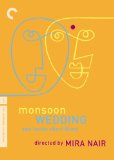| Reviews & Columns |
|
Reviews DVD TV on DVD Blu-ray 4K UHD International DVDs In Theaters Reviews by Studio Video Games Features Collector Series DVDs Easter Egg Database Interviews DVD Talk Radio Feature Articles Columns Anime Talk DVD Savant Horror DVDs The M.O.D. Squad Art House HD Talk Silent DVD
|
DVD Talk Forum |
|
|
| Resources |
|
DVD Price Search Customer Service #'s RCE Info Links |
|
Columns
|
|
|
Monsoon Wedding - Criterion Collection
THE MOVIES:
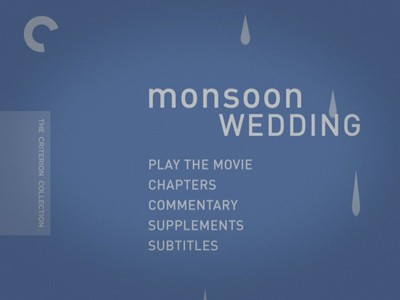
The first words that appear as Monsoon Wedding goes into the final credits are "For my Family." As far as movie punctuation goes, it couldn't be more perfect. It makes more sense than, say, "The End." Mira Nair's light-hearted drama is about nothing if not about family. It's the sort of work of art that could not be made without knowing all the love, anger, and frustrations that come with the most common of bonds. Sabrina Dhawan's script casts a wide net, pulling in all the distant strands of the Verma clan, with relatives coming in from America, Dubai, Australia and probably all points in between. This is a gathering that reflects the new global culture, and not in some falsified sense of politically correct diversity a la Jonathan Demme's Rachel Getting Married (which, in retrospect, owes a ton to Monsoon Wedding; get me an intellectual property lawyer, stat!). Consider the Verma backyard as the starting point, the paradise where man began, and they've now gone forth and multiplied.
The occasion of the family reunion is an arranged marriage. Aditi Verma (Vasundhara Das), the daughter of Lalit (Naseeruddin Shah) and Pimmi (Lillete Dubey), is to be married to Hemant Rai (Parvis Dabas). The Rais currently call Houston, Texas, their home, and they have returned to India for the grand celebration of a traditional wedding. Lalit is a successful merchant, but he's going into debt up to his eyeballs preparing a lavish four-day festival for his daughter. The wedding planner is a slick hustler named P.K. Dubey (Vijay Raaz), who before the ceremony is over will have found love himself, gaining the hand of one of the servants at the Verma house, Alice (Tillotama Shome). Her anglicized name is a symbol of the Westernization that was occurring all across India, as is the tattoo on the shoulder of one of Aditi's cousins (Neha Dubey) and the way everyone talks in an indistinguishable mix of English and Hindi. Not to mention all the cell phones--though, this is 2001, so they're twice as big as our phones now and just as crappy.
I wasn't all that impressed with Monsoon Wedding the first time I saw it. It seemed silly and cliché, the convenient arrangement of comedy and family drama being too...well, too convenient. Even on second viewing, I still felt much the same way through the first half hour or so. Dhawan's script relies heavily on soap opera. For instance, the bride is having an affair with a talk show host (Sameer Arya), and she has only agreed to the marriage with Hemant because she's convinced her lover will never leave his wife. Her confidant is her older cousin Ria (Shefali Shetty), who has been in Lalit's care since her father died but who has not yet found a husband herself. This is common romance movie stuff.
Except what Mira Nair and Sabrina Dhawan do with this set-up is so much more than that. The matters of the heart that they are going to explore are not confined just to the bride and the groom, nor is it a simple matter of who loves who and who doesn't and why or why not. Amidst all of this chaos are conflicts of old traditions and new, questions of responsibility, family secrets, and even an upstairs/downstairs division between servant and employer. The courtship of Dubey and Alice is one of the more understated and effective aspects of the movie. Dubey turns out to be sweet and intensely romantic, and the contrast between the ostentatious display he designs for the Vermas and the much smaller, much more intimate one he creates just for Alice is beautifully rendered.
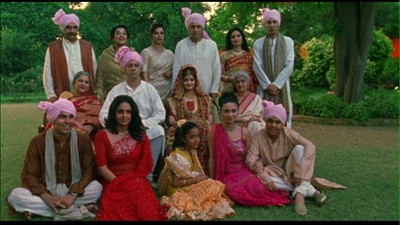
Mira Nair is a filmmaker who has always had an eye for lush compositions that she then contrasts with the real world. She likes trying to erect a little perfection within an imperfect setting. Look at her adaptation of Vanity Fair again, and notice how the costume design and art direction is as frilly and lovely as any costume drama, but she likes to show how the clothes get dirty and the cuffs grow frayed. In Monsoon Wedding, production designer Stephanie Carroll works overtime bringing Dubey's monolithic marigold ladders and flowing tents to life while also making them appear fragile and tenuous. Those orange starburst flowers don't want to stay in place, they litter the yard as if they were literally falling out of the sky. Given how gorgeous and brightly colored all of costume designer Arjun Bhasin's clothes are, it takes a flower that looks like flames to stand out.
If Monsoon Wedding were merely a pretty movie, it would be pretty enough to keep watching even without a good script. Luckily, as much attention is paid to the complexities of the characters as it is to the environment they inhabit. Each character gets his or her own story line, and each story line is fully fleshed out so that it is satisfying and contributes to the overall effect. Aditi's struggles with fidelity, Ria's hidden demons, even the tattooed cousin getting her Australian in-law to embrace his Indian heritage, which serves as counterpoint to Aditi moving on to America--all of these intriguing parts form an impressive whole. Again, on paper, this may read like something you've seen before, but Monsoon Wedding is written and performed with such honesty, it proves it's not how original the story but the quality of the execution. The familiarity of the clothes could make you miss how well they are worn the first time you watch the film, the way it did with me, but try it again, you'll start to get it the second time around.
Monsoon Wedding may be overrun with women, but the most memorable character in the movie is the father, Lalit Verma. A proud man, Lalit understands tradition and has hopes for how things should go. Naseeruddin Shah plays him at the edge of nervousness, like at any moment he could collapse from the burden of it all. He is a man of many contradictions, encouraging Ria to go to America and become a writer, a fairly progressive move, but he's rigid when it comes to his son, who likes dancing and cooking and may need to step through a closet door in the near future. Shah has many powerful scenes. He is fierce and noble when declaring his intention to protect his girls, but shockingly brittle when that determination is put to the test--and it's all the more admirable that he stands up given the doubt he must overcome. The scene that really sticks with me, though, is the morning after a startling revelation, when the father figure wakes up crying. Very few words are exchanged, but his wife pulls him into her arms, and we see the true strength at the heart of the Verma family. It's neither one nor the other, mother nor father, husband nor wife, but the two of them together.
With all of these primal emotions swirling around, it's no wonder that the filmmakers would turn to a symbol as primal as the weather to represent them. In the days leading up to the wedding, the weather is as scorching as the drama. By the time the titular monsoon comes to drench the wedding party, it's not a tempestuous explosion a la the madness storm in King Lear but a full-on release. Ironically, Lalit tried to protect his girls from just this kind of downpour, paying Dubey extra for waterproofing. That's how much the man's head had gotten turned in the wrong direction. This rain is exactly what the Vermas needed. Dodging the showers first cause them to huddle together, and then to let loose, to dance without any worry, to forget what might separate them. Even Dubey and Alice are welcomed into the circle. A rainstorm can, yes, be overwhelming and even deadly, but as Monsoon Wedding reminds us, it also cleans, refreshes, and rejuvenates. Wash away the old to make way for the new.
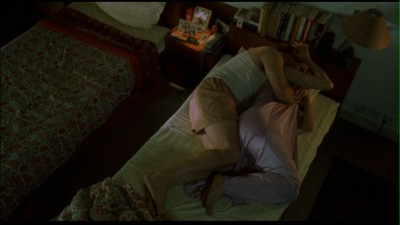
THE DVD
Video:
Mira Nair and her director of photography, Declan Quinn, have worked with Criterion to create an all-new 1.85:1 digital transfer that is nothing short of gorgeous. A film with such a rich color palette requires special attention to be paid to the vibrancy of its hues, and this new DVD totally delivers. The resolution is pristine, and the tonal values are perfectly preserved.
Sound:
The surround mix on the original soundtrack is just as fantastic as the video transfer. There is good speaker interplay, establishing a fully immersive atmosphere, paying attention to both the small background details and the louder stuff like the music, which sounds particularly amazing here.
Given the mixed language in Monsoon Wedding, English subtitles are provided. These are smartly handled, coming and going depending on whether the characters are speaking in Hindi or English. Given the rapid change-ups, it would be easy to lose the viewer with subtitling that disappears too quickly, but there are no such problems on this DVD. Closed captioning is also available for both discs in the set.
Extras:
The Monsoon Wedding - Criterion Collection DVD is a 2-disc special edition. The discs are housed in a foldable cardboard book with plastic trays, and it fits in a marigold-colored outer slipcover. The artwork from the opening credits is used to illustrate the box and accompanying booklet, linking the packaging to the movie in a smart, classy manner. The book has lovely photographs, an essay by author Pico Iyer, credits, chapter listing, a glimpse at a special piece of production art, and a guide to the bonus films on DVD 2.
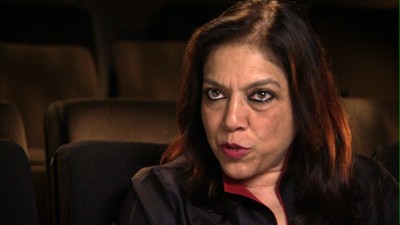
DVD 1 has the movie alongside a handful of extras. The main extra is an audio commentary track with Mira Nair. Recorded in 2002, it's a thorough run through the film. Nair is a speaker who knows how to stay on point and manages to fill most of the two hours with good information, revealing aspects of her process, talking about cultural elements of the movie, and really digging into the story.
Two new interview features add to our deeper understanding of Monsoon Wedding. In one, Mira Nair talks to Naseeruddin Shah (21:25) about his experience on the movie and feelings about it all these years later, as well as talking about real-life experiences that informed the picture. In the second, director of photography Declan Quinn and production designer Stephanie Carroll (10:30) discuss the look of the film and how they worked to achieve a common goal. Some on-set footage is included.
Finally, original theatrical trailer is the last supplement on DVD 1.
Well, the last official extra that is. For some reason, one of the listed Seven Short Films that is supposed to appear on the second disc is on the first disc instead--a fact that is likely to confuse you, as it did me, if you decide to go ahead and watch the extra movies before you dig into the Monsoon Wedding supplements. You might find yourself nosing around on DVD 2 looking for a movie that isn't there. Possibly because it had a strong influence on the filming of Monsoon Wedding, The Laughing Club of India is attached to the main feature's bonus material. It's a 2000 documentary, just over 35 minutes in length, that looks at the rather puzzling concept of "laughing clubs." These were a popular occurrence in Bombay, a gathering of folks to get together and...laugh. In its way, it fits in with Nair's other work in that it looks at the lengths people will go to get by and alternative choices that may seem strange to outsiders but that work for the individual. The laughing clubs are an attempt to create something positive in a world that may seem overwhelmingly negative, a celebration of life for the sake of it. A monsoon can come as rain, or it can come as a giggle fit.
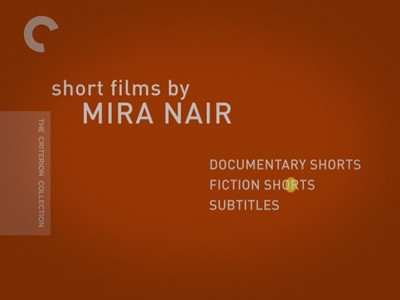
These themes come up again and again in the Seven Short Films collective. The other six of these are featured on DVD 2, and they are a real treat. These are all rare pieces helmed by Mira Nair, spanning three decades, from 1982 all the way up to 2008, three documentaries and four fiction films, some as short as eight minutes, some as long as an hour. Each movie is preceded by an optional video introduction by Nair where she discusses at length her inspiration and some of the details of each production.
The lead documentary, and Nair's first real cinematic endeavor, 1982's So Far From India should be of particular interest to fans of Monsoon Wedding. Nair and photographer Mike Epstein follow an Indian immigrant from his new home in New York back to his old village in India. There he is reunited with his wife and a child he has never really met. Their marriage was arranged just before the man left for the U.S., partially to keep him from getting involved with any Western women. The movie explores the concept behind this arrangement, as well as the economic practicalities of a family relocating across the world. As in many Nair films, her characters are displaced, caught between two cultures, searching for a new personal niche.
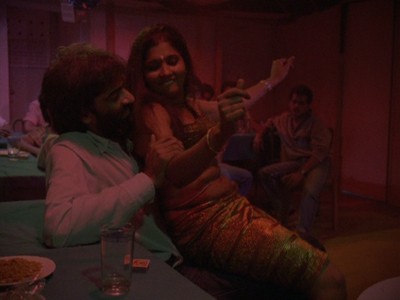
India Cabaret (1985) is the second documentary. It's a character study of several Indian strippers, made as a kind of social experiment to examine what makes one woman "bad' and another "good." Frank conversations with the girls are intercut with their performances, and Nair even follows one of their regular clients home and talks to his wife, juxtaposing her feelings about a woman's role in a man's life with the strippers' feelings about having taken their destiny in their own hands. The film can be quite funny, but also quite sad, especially as it follows one of the girls back to her home village and shows how her family now shuns her, despite her being the most successful among them. India Cabaret ends on a positive note, however, letting us see how the most outspoken dancer, Rehka, manages to make her plan for a new life come to fruition.
The four fiction films that follow the documentaries were all made for politically motivated anthologies, and they focus on themes of social change and personal identity. The 1993 piece The Day the Mercedes Became a Hat follows a white family leaving South Africa as the power balance is shifting all around them, while Nair's 2002 segment of 11'09"101 - September 11 shows how another family must fight to maintain their ground in the country they've chosen for themselves. Scripted by Monsoon Wedding-scribe Sabrina Dhawan, the 9/11 story is based on the actual plight of the Hamdani family, whose son Salman disappeared on 9/11. It's a true mystery, since Salman had no connection to the Twin Towers, he should have been on his way to work when they fell. Upon being reported missing, he was initially branded a terrorist despite there being no evidence to suggest that was true. When his body was found at Ground Zero, it was discovered that Salman had died a hero. He had been trained as an EMT and had rushed to the attack site to help people.
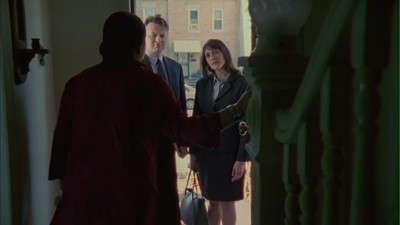
Salman Hamdani's mother never gave up on her son, nor does she give up on the country that he died in aid to, despite them getting it so wrong about him. Nair is sympathetic to these kinds of patriots, whether they are on the right side of justice or not. The white family who, like so many others at the time, flees from South Africa in The Day the Mercedes Became a Hat also draws empathy from the filmmaker, who as a resident of South Africa herself, realized that there were whole generations of Caucasian immigrants who knew no other home.
Sexual politics take center stage in the final two films. 2007's Migration was made in India as part of an AIDS awareness project that Nair produced, and 2008's How Can It Be? was part of a film that was meant to express different facets of the global community. The former is a none-too-subtle melodrama that moves up and down class lines as infidelity and deceit opens the way for HIV to spread; the latter is a story of a religious woman, played by Konkona Sen Sharma, who decides to leave her home and family and pursue a different passion. Both offer tough choices with equally tough consequences, though How Can It Be? is about the sacrifice asked of women who want to affect positive personal change and Migration is about how poor choices affect us all. Watch for Wedding's Vijay Raaz in Migration, this time playing the role of on-the-street condom pitchman.
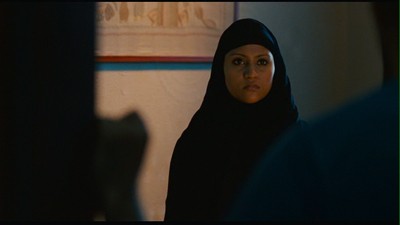
Some of the fictional shorts are a little obtuse, but they are all intriguing. They are also quite lovely, shot with Nair's usual eye for detail and sometimes sporting more experimental framing than in her more conventional narrative pictures. The documentaries also shed some light on Nair's creative origins and how she used nonfiction to develop her incredible powers of observation. These are like the missing links in the cracks of a filmmaker's evolution.
FINAL THOUGHTS:
Highly Recommended. Though on the surface Monsoon Wedding - Criterion Collection may seem like your average romantic soap opera draped in brightly colored saris, the more you look at the finely constructed story, the deeper the family revelations turn out to be. Director Mira Nair and writer Sabrina Dhawan have concocted a sweet confection that has lots of hidden treats at its center, making for one satisfying movie. If Monsoon Wedding is one candy, then that would make this new Criterion double-disc set a Whitman Sampler. A gorgeous new video transfer is joined by a bunch of great extras and seven short films directed by Nair, making Monsoon Wedding - Criterion Collection one of the most value-added DVD sets on the market.
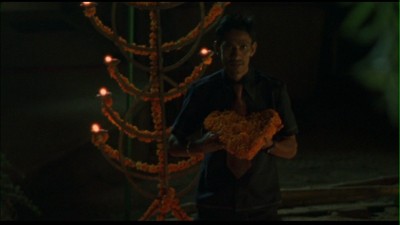
Jamie S. Rich is a novelist and comic book writer. He is best known for his collaborations with Joelle Jones, including the hardboiled crime comic book You Have Killed Me, the challenging romance 12 Reasons Why I Love Her, and the 2007 prose novel Have You Seen the Horizon Lately?, for which Jones did the cover. All three were published by Oni Press. His most recent projects include the futuristic romance A Boy and a Girl with Natalie Nourigat; Archer Coe and the Thousand Natural Shocks, a loopy crime tale drawn by Dan Christensen; and the horror miniseries Madame Frankenstein, a collaboration with Megan Levens. Follow Rich's blog at Confessions123.com.
|
| Popular Reviews |
| Sponsored Links |
|
|
| Sponsored Links |
|
|
| Release List | Reviews | Shop | Newsletter | Forum | DVD Giveaways | Blu-Ray | Advertise |
|
Copyright 2024 DVDTalk.com All Rights Reserved. Legal Info, Privacy Policy, Terms of Use,
Manage Preferences,
Your Privacy Choices | |||||||









